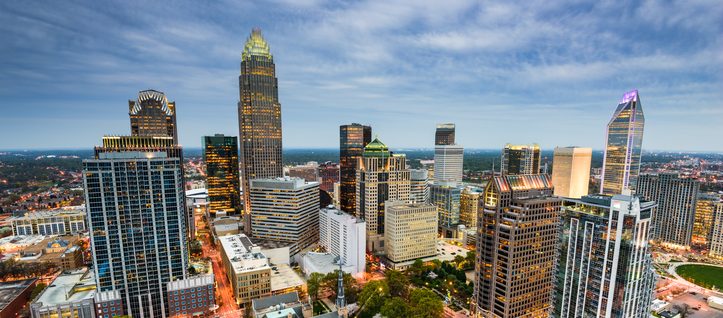This article is an excerpt from GovLoop’s recent guide, “Emerging Tech in Government: What It Means for Your Career.” Download the full guide here.
The Internet of Things is the network of machines, objects, animals and humans that have unique identifiers and can transfer data via the internet. Think smart televisions, Wi-Fi-enabled cars and voice-recognition devices like Alexa. This field is growing rapidly.
“The Internet of Things is super-promising for local and state governments, but because it’s an emerging technology, it can be expensive, and it is relatively untested,” said Joshua New, Policy Analyst at the Center for Data Innovation. “That creates a high level of perceived risk.”
We’ve compiled several case studies that show how IoT has begun to impact the public sector.
Constructing Smarter Buildings
Since launching in 2012, GSA’s Smart Buildings initiative has sought to modernize federal government buildings with connected technologies.
The first phase saw the installation of thousands of sensors in 50 of the government’s most energy-intensive buildings to collect at least 1,000 data points related to energy use and operational efficiency per building.
Technologies range from simple sensors that turn off lights when employees leave their desks to more advanced systems that raise and lower shades based on the amount of sunlight coming through windows. GSA has estimated that this initiative has generated $15 million in annual savings.
The agency has sought other opportunities to increase efficiency using this data. In June 2013, it partnered with IBM to implement a new analytics program to solve subtler efficiency problems, such as irregular air flow from specific building vents.
Further, GSA connected its desk-reservation system, called BookIt, to its security system, so that whenever an employee scans an ID badge to enter a building, their desk powers up and lights turn on once they sit down.
Deploying Smart Streetlights
For several years, Los Angeles has been updating its network of LED streetlights with mobile sensors that alert officials when bulbs burn out. Eventually, officials will also be able to brighten, dim and blink the lights, and gather environmental information on an area.
Cities such as Chicago have undertaken similar projects. Others, including San Diego, have gone even further. It installed streetlight sensors to collect information about parking spaces, gunshots and air pollution. In that city, officials plan to make the information publicly available and to allow software developers to build apps that use the data.
Because of the relative low cost and variety of benefits, more U.S. cities are likely to install similar IoT sensors on their streetlights in the coming decade.
Austin Ashe, General Manager of Current, which operates the sensors in San Diego told IEEE: “We think streetlights are the place to do this, because they have power, ubiquity and the perfect elevation — high enough to cover a reasonable radius, low enough to capture a lot of important data.”
Enhancing ‘America’s Main Street’
Washington, D.C., has begun implementing its own IoT applications — specifically along Pennsylvania Avenue near the White House. The project, titled “PA 2040,” will deliver publicly accessible internet by way of DC-Net Wi-Fi and sensor-based LED streetlights, in addition to enhanced wayfinding, managed parking demand, and improved maintenance and emergency response capabilities.
The city’s Office of the Chief Technology Officer (OCTO) is hoping to use the streetlighting infrastructure to deploy an environment sensor and video-based lighting solution. The data OCTO collects will be used to create applications that will improve District operations and reduce costs as part of a wider effort to enhance and revitalize the historic corridor.
As Phase One of the deployment — sensor-based streetlighting and ubiquitous public Wi-Fi throughout the area — approaches completion, OCTO is planning for Phase Two, which includes enhanced closed-captioned television, smart parking, environmental sensing and smart metering.
The goal, OCTO states, is to “encourage efficient use of District infrastructure, effectively engage the local community in the innovation process and improve the collective intelligence of the District’s institutions.” The city is also hoping this IoT framework will prove beneficial to technological advancements in the next decade.
IoT by the numbers
- 75.44 billion devices on the Internet of Things by 2025.
- $457 billion global IoT market by 2020, compared with $157 billion in 2016.
- 350,000 traffic accident injuries prevented by internet- connected cars by 2025, as well as 11,000 lives saved.




Leave a Reply
You must be logged in to post a comment.